by amgranger | Dec 7, 2018
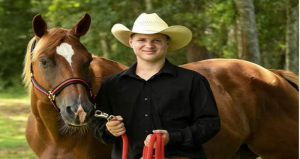
Photo Credit: Melissa Loper
Warren Loper is an award-winning member of the Boots and Buckles 4-H Horse Club. Earlier this year, the Jackson County 4-H’er won awards at both the regional and state 4-H horse shows. What makes Warren unique is that he is also hearing impaired. But Warren is very much a “people person” and doesn’t like feeling different from anyone else. His mother, Melissa Loper, recently talked to me about his 4-H experience and how it has played a role in helping Warren build confidence and achieve success regardless of his challenge.
At two weeks old, Warren was diagnosed as being completely deaf due to improper functioning hair follicles in the Cochlea. At 15 months of age, he received a Cochlear implant that was activated at 18 months of age.
Melissa said Warren didn’t like the Cochlear implant at first because it allowed for all sounds to be heard at once. He had to learn how to drown out background sounds. The implant had to be turned down completely and then slowly raised to a level that was tolerable. His ability to handle the implant increased as he got older. Melissa says there are times when Warren would rather not be able to hear.
When asked what role 4-H has played in helping Warren build confidence and feel included, Melissa shared the following:
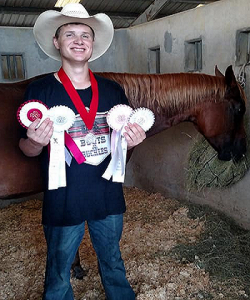
Photo Credit: Julie Hughes
“Being involved in the 4-H Horse Project has helped him so much. He has come out of his shell. His club leader, Lindsay Kiefer, has spent hours working with Warren and is so patient with him. He lives for helping other children, and it makes him feel important. One key thing is that no one on our team treats him like he is different than they are. As a mother, that is so important to me. Seeing the improvements he has made in his social skills and seeing him develop into an amazing rider warms my heart.”
One of the key components of 4-H is developing life skills and providing a safe and inclusive environment for all youth regardless of their physical or mental conditions. 4-H allows all youth the opportunity to explore their areas of interest. For Warren, the 4-H horse project allows him to learn the valuable life skills that come from raising and showing a horse and also allows him to exhibit mastery of learned riding skills in competitive events.
FUN FACTS…
Youth involved in the 4-H Horse Project learn more than just the science behind feeding and caring for a horse, and how to properly ride. Youth also compete in contests such as horse bowl, demonstrations, public speaking and art. Youth participating in this projects use their horse as a tool to increase their knowledge and enhance their life skills making them more productive young people. To find out more about the horse project in your county, contact your local UF/IFAS Extension office.
by bestevez | Nov 30, 2018

Every organization has its own culture, and 4-H is no exception. Here are the ones that make 4-H unique!
What is 4-H?
4-H is the youth development outreach program of Land Grant Universities, the Cooperative Extension system, county government, and the United States Department of Agriculture.
4-H members are actively involved in educational projects that are fun but also instill life skills while working with caring adult leaders. 4-H projects use quality curriculum incorporating the most current research and knowledge available through the Land Grant University system.
4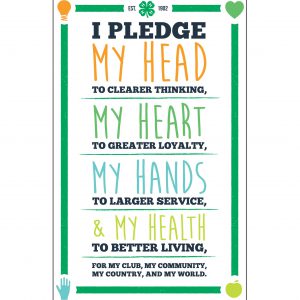 -H Pledge
-H Pledge
The 4-H Pledge states what we want youth to achieve as a result of their involvement in the 4-H Youth Development program. It reminds members of the four areas of growth 4-H targets and reinforces the importance of mastery of life skills.
4-H Colors
The 4-H colors are green and white. White symbolizes purity and high ideals. Green, nature’s most prominent color, represents growth.
Motto: “To Make The Best Better”
The motto’s intent is to inspire young people to continue to learn and grow and to make their best efforts better through participating in educational experiences.
Slogan: “Learning By Doing”
This sums up the educational philosophy of the 4-H program. Young people learn best when they are involved in learning. The intent is for youth to become engaged in learning by doing, reflecting on their experiences, and applying it to future situations.
4-H Name and Emblem
The 4-H Youth Development Program is represented by a popular, recognizable image that consists of a green four-leaf clover with a right turned stem and the letter “H” in white on each leaflet.
The text, 18 U.S.C. 707, appears with the emblem.The name and emblem are held in trust by the Secretary of the USDA and are protected by Title 18 of the United States Code, Section 707 (18 U.S.C. 707). This means it is afforded the same status and regard as the White House and Presidential Seals and may only be used as authorized by the statute, regulations and guidelines, and according to the authorization of the Secretary or designated representative.
I hope you enjoyed learning more about the culture of 4-H. Use of the 4-H name, motto, slogan and emblem signifies youth, adult leaders and 4-H Agents agree to the principles of youth development promoted through 4-H. To find about more about 4-H in your county, click here.
Want to learn more?
by Prudence Caskey | Nov 16, 2018
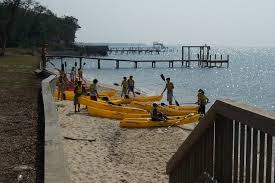
Photo credit UF/IFAS Washington County
Black Friday is only a week away, but you can get one gift taken care of TODAY!
Making my list…checking it twice…adding 4-H Camp for a kid who’s been nice!
This holiday season, parents and grandparents get swamped with requests for the newest toys or gadgets. Does it drive you crazy? So, I have a suggestion for you. Give the gift of 4-H Camp this year.
Life skills to last a lifetime
I began attending 4-H summer camp when I was eight. As a new and eager 4-H member, I learned so many life skills I still use to this day – like making my bed, cleaning up after myself, helping others, learning to be an independent thinker and most of all, leadership. At the age of eight, I was a leader! I was only leading myself, but I was responsible for myself. As I grew in the 4-H program, I became a camp counselor leading other youth. 4-H camp taught me so many wonderful skills as a child, and I only thought I was having fun! 
Fun, adventure (and education, too)
When a child attends 4-H summer camp, their week is full of fun and adventure. Youth will learn to kayak, dance and even shoot a bow! Many of our youth experience new and exciting adventures like learning how to build a fire and even what “Ga-Ga Ball” is all about. In addition to all the “fun” stuff, 4-H camp teaches life skills, like how to get along with others, independence and leadership. If you have a teen in your family, 4-H camp provides leadership experiences that can help them with college scholarships and applications.
4-H Camp keeps on giving
We’ve all seen Christmas gifts go unused shortly after they are taken out of the box. The gift of 4-H camp will not go unused and will keep giving every year as your child, grandchild, niece or nephew grows in the 4-H program. Contact your local UF/IFAS County Extension Office and find out how to register the child on your list for 4-H Camp today.
by Allison Leo | Nov 9, 2018

Youth making blender salsa during Leon County’s 4-H Culinary Camp
Are you having a tough time finding kid-approved snacks? With a little extra planning, you can add extra fruits, vegetables and whole grains to your child’s diet. The following snacks can be included in lunch, enjoyed as an after school snacks or as a great addition to any 4-H club meeting!
Stovetop Popcorn
It’s quick, easy, delicious AND a whole grain. Stove top popcorn is delicious just with a sprinkle of salt, but kids can get creative by adding toppings like sugar/cinnamon, Parmesan cheese or lemon zest with pepper. The United States Department of Agriculture (USDA) recommends making half of your grains whole grains each day. Here’s a simple stovetop popcorn recipe for you to try.
Snack Mix
This is another great way to get kids involved in creating their own snack mix using a variety of items. The key is to change it up every few weeks to keep kids interested. Suggested items include: chex mix, dried blueberries, raisins, chocolate chips, walnuts, pretzels, whole grain crackers, popcorn, and more. Use this snack mix recipe as inspiration.
Fruit or Vegetable Kebabs
Kids can help put together this great afterschool snack. For fruit kebabs, try grapes, apples, blueberries or kiwi. For vegetable kebabs, try green peppers, mushrooms, tomatoes or yellow squash. They can be simple with only two items such as strawberry and pineapple or cherry tomatoes and broccoli. You can dip the fruit kebabs in vanilla yogurt or drizzle them with honey. A side of ranch or hummus pairs perfectly with vegetable kebabs. The key is to purchase fruits and vegetables that are in-season to make this snack budget friendly. Here is a resource to find out what is in season in Florida.
Hummus
Let’s be honest, hummus and vegetables might not be at the top of the list of your kid’s favorite snack item. The key is to allow kids to make the hummus and serve it with a variety of items to dip. You can dip carrots, celery, radishes, pretzels, or crackers in hummus. Hummus can be made ahead and stored for a few days sealed tight in the fridge. Here is my favorite hummus recipe.
Blender Salsa
Here’s another fun way to get kids in the kitchen to make a perfect snack for after school. You can put together this recipe in less than 5 minutes – it’s so easy Try this basic blender salsa recipe, but feel free to add your own inspiration by adding extra ingredients.
Smoothies
Endless recipes make smoothies a great after school snack. You can even pack a smoothie for lunch. To ensure the smoothie stays nice and cold, place the thermos in the freezer the night before. In the morning, pour the freshly made smoothie into the frozen thermos. A personal favorite smoothie of mine is: 1 frozen banana, 1 cup milk, 1 scoop of peanut butter, 1 small scoop of cocoa powder and a handful of spinach. The spinach blends right in (you can’t even taste it), and the cocoa powder hides the color of the spinach.
Whole Grain Muffins
Whole grain muffins are an easy snack to make ahead and enjoy throughout the week. Muffins freeze well and still taste delicious when thawed. You can make chocolate chip, strawberry, blueberry, banana, pumpkin and more. Muffins can also be used as a quick breakfast while you are running out the door. For some extra protein, just add some nut butter, such as peanut or almond. Here is a delicious whole grain blueberry muffin recipe.
To learn more about 4-H’s healthy living goal, find your local UF/IFAS Extension office.
by Julie Pigott Dillard | Nov 7, 2018
Hands to Larger Service…a perfect description of the amazing teens of the Jefferson County 4-H Teen Council.
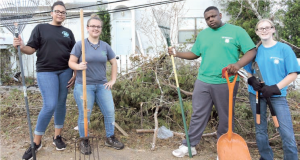
The hardworking Jefferson County 4-H Teen Council.
The naturally curious Jefferson 4-H County Council put their best foot forward as they volunteered in Panama City on Saturday, October 20. The teens spent the entire day moving and piling tree limbs, garbage, housing debris and miscellaneous items. These resilient teens worked around utility workers, fallen power line, utility poles and even worked through the rain.
“It was very devastating,” said Sierra.
Sarah added, “The devastation that we saw was unreal compared to what we’ve seen broadcasted on the news.”
“It was just amazing to witness,” Crandall added.
 After spending the day in Panama City, Jada Mosley says that the trip home to Jefferson County served as a time to reflect on all they had witnessed in the city. “I was very grateful,” said Jada.
After spending the day in Panama City, Jada Mosley says that the trip home to Jefferson County served as a time to reflect on all they had witnessed in the city. “I was very grateful,” said Jada.
“These teens have displayed practical application of Extension’s youth leadership to the Disaster Relief efforts. They displayed service above self,” reports John Lilly, Jefferson County Extension Director. “This experience gave the council real-world hands-on learning that will prepare them for future disasters.”
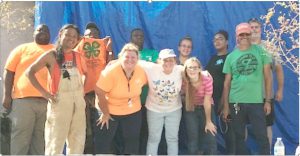
Homeowner and Bay County 4-H Agent with her clean-up crew.
Hurricane Michael was particularly hard on the Extension family because it affected so many of our own – including every member of the UF/IFAS Bay County Extension office.
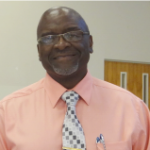
Special thanks to John Lilly, UF/IFAS Jefferson County Extension Director & 4-H Agent for providing this article and pictures.
by Niki Crawson | Oct 26, 2018

A happy 4-H member’s smile is contagious in this face-friendly clover costume.
While Walmart has already jumped to Christmas season, many parents are still scrambling to figure out their children’s costume for October’s Halloween party. Now, all of us have the cutest pumpkins in the pumpkin patch, but none of our children want to dress up as pumpkins anymore! Gone are the simple days of our generation when white sheets with eye holes were the extent of our Halloween attire.
With the hectic schedule of the world and the complicated costumes of today, here are a few guidelines to follow when helping children choose Halloween costumes (and keep them safe safety during the spooktacular holiday season).

This little pumpkin has comfortable walking shoes for trick or treating.
If it Fits, it Flies Past Inspection
While cute or scary may be what the children are striving for, well-fitting costumes should be the goal for all parents. Ill-fighting costumes are a disaster waiting to happen. Costumes that hang loosely become a distraction. Capes, gowns, or any material in length that drags the ground can be a tricky thing to maneuver at any age so be sure to trim above the ankle. Speaking of ankles, shoes that are too high can cause unexpected hospital visits so keep shoes low to the ground and comfortable to walk in. Children (and parents) do a lot of walking to collect their candy treats. Shoes that are too large or too small can cause blisters and cranky children, all things to avoid on a fun night.
Can You See Me Now?
One of the scariest things about Halloween is not what you can see but what you can’t see! Not being able to see children in costume in poorly lit areas of the neighborhood can be scary for adults. Parents, remedy this by using inexpensive reflective paint or tape to make children’s costumes visible or giving them glowsticks to wear or flashlights to hold.
Be sure to think about if your children can see well in their costumes. Masks can be difficult to wear if they don’t fit well. Be sure that eye and breathing holes are extra-large. If a costume can be complete without a mask, consider skipping it and use makeup. If costumes are come with hats, scarves, or capes, secure them down with velcro to keep from hitting others.
Does my Makeup Look OK?
Children love face paint and makeup, and hair dye appears to be the latest trend. Halloween seems a good fit for these outlets, but use them with caution. More and more children are sensitive to pigments found in everyday items – makeup included. Your children may be going for the spooky look but not at the risk of it being itchy and painful. If your children will be using face paint, makeup and/or hair dye, do a simple test run at least a week before use to ensure there are no allergies to the ingredients.
Accessorize Everything…Or Not
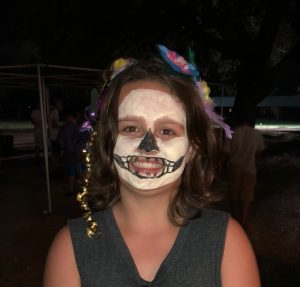
Makeup that does not obstruct children’s view is essential to their safety.
You’ve probably heard that “accessories make the outfit,” but in the case of Halloween and children, accessories can be highly overrated. Parents usually end up carrying the accessories that went with their children’s costumes before the night is over. But if children insist their outfits are not complete without a Ninja sword or Katniss Everdeen’s bow and arrow, be sure they are easily distinguished toys. Those accessories should be soft and flexible.
Spooktacular Adventure Awaits!
Whether you get into Halloween with costumes or not, these tips are good reminders for all of us to look out for children and keep them safe. Enjoy the upcoming holiday seasons!
To find out more information about 4-H programs that can offer essential life skills to your children or to volunteer your time to work with children in your area, please contact your local UF/IFAS County Extension Office, or visit http://florida4h.org.
by Julie Pigott Dillard | Oct 1, 2018
2018 4-H Chick Chain
The final link in the 4-H Chick Chain project closed on Saturday as 4-H members from the northwest extension district participated in a showmanship and skill-a-thon contest and brought their best birds for judging.

Skill-a-Thon Seniors

Skill-a-Thon Juniors
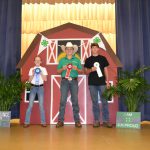
Skill-a-Thon Intermediates
Showmanship – This tests youth on how knowledgeable they are about the care, nutrition and health of their project and how they handle their bird.
Junior Showmanship – 1st Taylor Anderson,
2nd Tucker Padgett, 3rd Emma Weeks
Intermediate Showmanship – 1st Catherine Proud, 2nd David Marr, 3rd Brodie Price
Senior Showmanship – 1st Kearsten Dalton, 2nd Hailey Dalton, 3rd Brayden Price

Best of Breed winners
Exhibition – How the youth fed and cared for their projects was also put to the test as the birds were judged on breed characteristics and production potential.
Best of Breed Barred Rock – JaceBryan Broxson
Best of Breed Buff Orpington – Ethan Thornburry
Best of Breed Cochin – Brooks Marr
Best of Breed Cuckoo Maran – Kearsten Dalton
Best of Breed Speckled Sussex – Emma Fore
Best of Breed White Leghorn – Bella Price

Overall Grand Champion and Reserve Champion
Grand and Reserve Champions
From the Best of Breed winners, an overall grand champion and reserve champion were named.
Overall Reserve Champion – Emma Fore
Overall Grand Champion – Bella Price

Best of Show Production Bird
Best of Show Production
Youth who have participated in the 4-H Chick Chain in 2016 and 2017 also brought their best production birds to be judged. Birds were judged on production elements.
Best of Show Production – Brayden Price
Skill-A-Thon

Skill-a-Thon Juniors

Skill-a-Thon Intermediates

Skill-a-Thon Seniors
Skill-a-thon is a hands-on way to test general knowledge of poultry including identifying breeds, setting up a brooder, reading a feed label, identifying common poultry diseases and identifying parts of the chicken.

Photography Top Senior
Photography
Our newest category youth this year included photography. We had several entries featuring the birds at all ages of the project.
Best of Show Photography Senior – Hailey Dalton
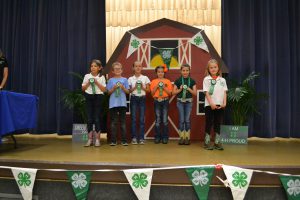
Cloverbud Exhibitors
Cloverbuds
Our Cloverbud 4-H members are an important part of our project. Even though they are non-competing, they participated in every aspect of the show, skill-a-thon and project books.
Be sure to like the 4-H in the Panhandle Facebook page to get the latest information on when registration for the 2019 4-H Chick Chain project will open. There’s also a comprehensive list of all of the award winners from this year!
Thanks for participating

by amgranger | Sep 28, 2018
Be Prepared and Have a Plan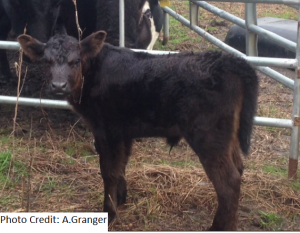
This time last year, we were helping our 4-H friends all over Florida recover from Hurricane Irma. Hurricane season has been quiet in Florida so far, but that doesn’t mean we need to let our guard down – we still have two more months of hurricane season.
So,what would you do if you didn’t have electricity? How will you care for your 4-H project animals? Do you have an evacuation plan? Answers to these questions become major issues when dealing with disasters.
Disasters can be natural/weather-related, man-made or accidental. Regardless of the type, it’s important to be prepared and have a plan for you and your animals.
Plan for Your Animal’s Safety
Whether you evacuate or shelter in place, here are a few considerations:
- Be ready to leave once the evacuation is ordered.
- Evacuate animals as soon as possible.
- Your project animal won’t be able to stay with you in a shelter like a dog or a can.
- Know where safe livestock facilities are in your area or along your evacuation route.
- If you can’t evacuate, decide if you’re keeping animals confined to a barn or turning them out into pastures.
- Barn confinement may become dangerous and take away the animal’s ability to protect themselves.
- Pastures should be at least one acre in size with no potential hazards (barbed wire, power-lines, polls or items that can be picked up by the wind).
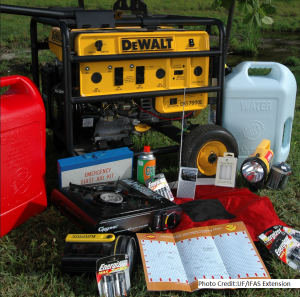 Disaster Preparedness for Livestock – Why Livestock Owners Need to Be Prepared
Disaster Preparedness for Livestock – Why Livestock Owners Need to Be Prepared
The Florida Department of Agriculture and Consumer Services (FDACS) has some suggested guidelines about preparing livestock and horses for disasters:
- Check with your local humane organization, extension office or local emergency management agency to read about your county disaster response plans.
- Determine safe evacuation routes for trailers and livestock.
- Prepare a Farm Disaster Kit and Basic First-Aid Kit. Remember, supplies during or after the disaster may be in short supply, or roadways may be blocked. Keep kits up-to-date, keep them on-site and in your vehicle.
- A vaccination and test records (Coggins, health certificates, etc.)
- A list of all animals, where they are located on the farm and feeding instructions/records
- Sanitation items, cell phone, flashlights, portable radios and batteries.
- Have feed, water, handling equipment, tools, veterinary supplies and a generator (with fuel) on hand if possible.
- Make a list of emergency numbers – veterinarian, neighbors, state veterinarian, animal shelter, county extension office,local volunteer organizations and someone outside of the disaster area.
- Make sure you have proof of animal ownership. Have temporary ID supplies on hand like permanent markers and plastic bands that are safe, durable and visible. ID should include your name, address, and telephone number.
- Poultry need access to high areas to perch if you’re in an area susceptible to flooding. Provide access to clean water and food.
- Remove barbed wire or other fencing so animals can move to areas of safety during flooding or high winds.
- Store water in large containers (enough for a week) suck as troughs, swimming pools or boats
- Secure items that might be picked up and thrown by the wind like pieces of metal, troughs, tanks or trailers.
- Ensure there is safe shelter, fencing or pens.
- Keep animals in groups they’re used to where they are securely contained and protected from the elements.
Resources:
For more information about 4-H, contact your local UF/IFAS County Extension Office. If you are an adult or teen with skills or knowledge you’d like to share, ask about becoming a 4-H volunteer!
by Rachel Pienta | Sep 21, 2018
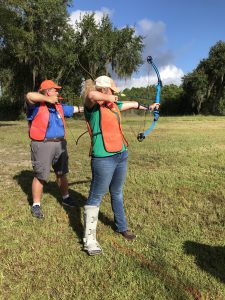
4-H Volunteers learn and practice the archery pre-shot routine so they can teach it to their youth. Photo: Julie P. Dillard
Ready to Lead
Sixteen 4-H volunteers joined ranks with one of Florida 4-H’s largest projects by earning their Level One Shooting Sports Instructor certification September 8. Training participants included 4-H volunteers and UF/IFAS Extension staff from Escambia, Holmes, Jefferson, Marion, Wakulla, Walton, Union and Alachua counties. What sets 4-H instructor training apart from other shooting sports trainings is the focus on youth life skills and positive youth development as opposed to focusing only on skill mastery.
About Florida 4-H Shooting Sports
The 4-H Shooting Sports Program teaches young people safe and responsible use of firearms, principles of archery and hunting basics. Lifelong skill development is one of the main benefits of involvement in the 4-H Shooting Sports Program and applies to both youth and adults involved in the program. Specifically, the 4-H Shooting Sports Program is designed to:
- Provide youth proper training in the use of firearms, archery equipment, and other areas of shooting sports.
- Provide thorough instruction in shooting sports safety.
- Develop life skills such as self-confidence, personal discipline, responsibility, and sportsmanship
- Create an appreciation and understanding of natural resources and their wise use.
- Provide volunteer instructors safe and proper instructional techniques.
- Show volunteer leaders how to plan and manage 4-H Shooting Sports Clubs. (Culen et al, 2018).
Resources for Success
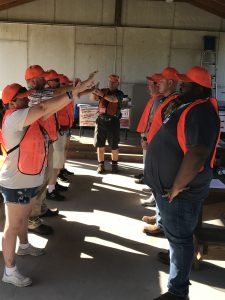
Establishing eye dominance is one of the first tasks of new member. Photo: Julie P. Dillard
It’s important to equip agents, volunteers and youth with the tools they need to succeed in the Florida 4-H Shooting . To assist you in organizing the county shooting sports program, here are some resources from the 4-H State Shooting Sports Committee and Environmental Sciences Action Team:
State Match Information, Rules and Risk Management
Youth Project Books
Getting Organized
To learn more about your county shooting sports program, contact your local 4-H agent.
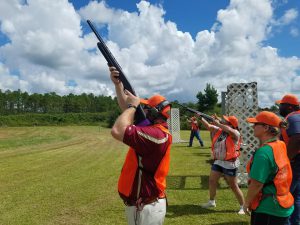
Wakulla 4-H Shooting Sports Club Leader, David Pienta, takes aim during shotgun instruction. Volunteers practice peer teaching to get ready to teach 4-H youth.
by Yolanda Goode | Sep 14, 2018
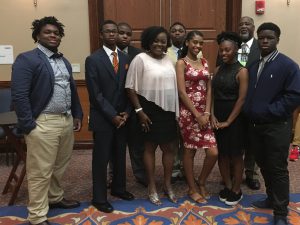
Gadsden County 4-H youth on campus for 4-H University. 4-HU is the premier youth leadership development event of Florida 4-H.
Leaders – Born or Made?
Many of us have heard the saying, “oh, that young man or woman is such a natural born leader.” But are leaders born that way, or do they develop into leaders? These Gadsden County delegates took advantage of 4-H University this summer – an awesome Florida 4-H state event designed to grow leadership skills. Many of them have also served as volunteer 4-H camp counselors during the summer. They understand that leaders are developed and not born.
What Defines a Leader?
Sometimes people confuse charisma with leadership abilities. Charisma is a special magnetic charm or appeal (Merriam-Webster Dictionary). Many of our local to national leaders have some level of charisma. In addition to charisma, leaders should have the more important skills such as communication, problem solving, critical thinking, managing, and self-awareness. There are many definitions for leadership because there is no universal definition. Leadership involves a process while a leader is the one who carries out the process.
How Does 4-H Unlock Your Leadership Potential?
One of my favorite teaching tools used to develop my Gadsden County 4-H leaders is the “Unlock Your Leadership Potential” by UF/IFAS Extension. It has influenced how I would define a leader. The overall goal of a good leader is to move the group or organization toward its goals while building a sense of togetherness and well-being.
Florida 4-H grows leaders at the club, county, district, and state levels by creating safe and nurturing environments and providing quality experiences. Knowledge and skills are great, but being able to apply them through experience is what fortifies and matures youth as well as increases their confidence. The 4-H slogan, “Learn by Doing”, is why the 4-H Experiential model is important to UF/IFAS-Extension 4-H Youth Development Program. The more active the youth and the duration of a their engagements in 4-H positive youth development the greater the benefits not just for them but also their communities (2013, National 4-H Council). It takes a whole team of Extension professionals, staff, 4-H Seniors, and volunteers to make the “magic” happen.
Call to Action:
- Begin the journey as a youth or volunteer: http://florida4h.org/getinvolved/
- Engage in local and state 4-H programs: http://florida4h.org/programsandevents_/
- Give to Florida 4-H: https://www.uff.ufl.edu/give-now/?fund_id=003603
- Read and share the other great blogs by my colleagues here: https://nwdistrict.ifas.ufl.edu/4hn/
- Join the “30 Days of Doing” 4-H Movement: https://4-h.org/inspire-kids-to-do/
References and Further Reading:





























